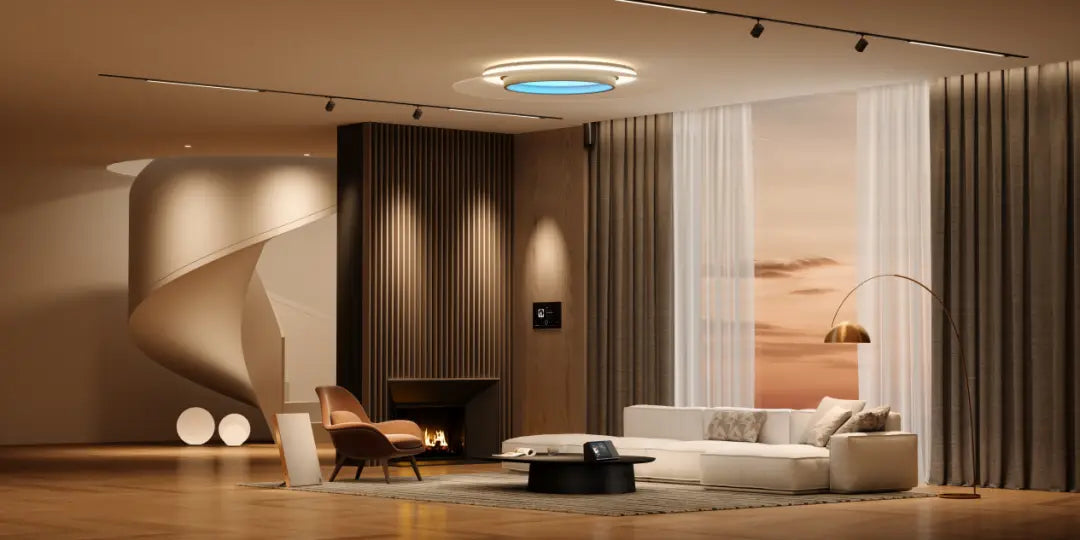
Home Kitchen Lighting Selection: A Functional and Stylish Guide
A well-lit kitchen is the heart of any home—it’s where meals are crafted, conversations flow, and memories are made. But kitchen lighting isn’t just about brightness; it’s about balancing task efficiency, ambiance, and safety. From layered lighting strategies to smart tech integration, this guide will help you design a kitchen that’s both practical and inviting.
Why Kitchen Lighting Matters
Task Performance: Chopping, cooking, and cleaning require focused, shadow-free light.
Safety: Proper lighting reduces accidents near hot surfaces and sharp tools.
Mood Enhancement: Warm, dimmable lights create a cozy atmosphere for dining or entertaining.
Aesthetic Appeal: Lighting highlights design elements like backsplashes, islands, or open shelving.
1. Layered Lighting: The Golden Rule
A mix of three lighting types ensures versatility:
1. Ambient Lighting
Purpose: General illumination for the entire space.
Options:
Recessed Downlights: Space 4–6 feet apart for even coverage (6-inch diameter, 800–1000 lumens each).
Flush-Mount Ceiling Lights: Ideal for low ceilings (e.g., Kichler Moderna 4-Light Fixture).
rack Lighting: Adjustable heads to highlight zones like islands or pantries.
2. Task Lighting
Purpose: Direct light for work surfaces (countertops, sinks, stoves).
Options:
Under-Cabinet LED Strips: Choose high-CRI (≥90) strips (e.g., Philips Hue Lightstrip) to reveal true food colors.
Pendant Lights Over Islands: Hang 30–36 inches above the counter (e.g., West Elm Cylinder Pendants).
Directional Sconces: Install near sinks or prep areas (IP44-rated for moisture resistance).
3. Accent Lighting
Purpose: Add depth and style.
Options:
In-Cabinet Lighting: Showcase glass-front cabinets or dishware.
Toe-Kick Lights: Soft glow under baseboards for nighttime navigation.
Decorative Pendants: Use over breakfast nooks or dining tables (e.g., Tom Dixon Melt Pendants).
2. Key Lighting Metrics to Consider
Color Temperature (Kelvin)
2700–3000K: Warm white for dining areas or evening ambiance.
3500–4000K: Neutral white for task zones (balances clarity and comfort).
5000K+: Cool white for intense tasks (e.g., knife work), but use sparingly to avoid sterility.
Brightness (Lumens)
General Lighting: Aim for 50–75 lumens per square foot.
Task Zones: Boost to 100+ lumens per square foot (e.g., under-cabinet strips at 400–500 lumens per foot).
CRI (Color Rendering Index)
Choose CRI ≥90 for accurate food prep (e.g., red meat freshness, herb colors).
3. Smart Lighting for Modern Kitchens
Voice Control: Sync lights with Alexa or Google Home for hands-free adjustments.
Automated Scenes:
“Cooking Mode”: Bright, cool-white lighting.
“Dinner Mode”: Warm dimmed lights over the island.
“Night Light”: 10% brightness for midnight snacks.
Motion Sensors: Trigger under-cabinet lights when entering the kitchen.
4. Common Mistakes & Fixes
Glare Over the Sink: Use frosted glass fixtures or position recessed lights slightly in front of the sink.
Shadowy Countertops: Combine overhead and under-cabinet lighting.
Overly Bright Islands: Install dimmable pendants and layer with ambient light.
Ignoring Vertical Surfaces: Add sconces or uplighting to brighten backsplashes.
5. Top Lighting Fixtures for Every Kitchen Style
Modern: Linear LED pendants (e.g., Artemide Tizio).
Farmhouse: Wagon-wheel chandeliers (e.g., Restoration Hardware).
Minimalist: Slim recessed lights (e.g., Halo Ultra-Thin).
Industrial: Edison-bulb fixtures with black metal frames.
6. Pro Tips for Installation
Island Lighting: For a 6-foot island, use 2–3 pendants spaced 24–30 inches apart.
Dimmer Switches: Mandatory for adjustable moods (e.g., Lutron Caséta).
Height Guidelines:
Over tables: 28–34 inches above the surface.
Over islands: 30–36 inches.
Electrical Safety: Hire a licensed electrician for hardwired fixtures.
7. Energy Efficiency & Sustainability
LEDs: Save 75% energy vs. incandescent bulbs; opt for ENERGY STAR-certified models.
Solar Tubes: Harness natural light for daytime tasks (ideal for windowless kitchens).
Recycled Fixtures: Brands like Cedar & Moss offer eco-friendly designs.
Final Checklist Before You Buy
✅ Measure your kitchen layout (countertops, islands, ceiling height).
✅ Choose fixtures rated for damp/dry locations (check IP ratings).
✅ Test bulb color temps with paint samples to avoid clashes.
✅ Plan for future tech (e.g., smart bulbs with Matter protocol support).
Conclusion
Great kitchen lighting is a blend of science and style. By layering ambient, task, and accent lights—and integrating smart tech—you’ll create a space that’s both functional and welcoming. Start with task lighting (the workhorse of your kitchen), then build ambiance with dimmers and decorative pieces. Remember: Your kitchen deserves to shine as brightly as your culinary creations!
Ready to upgrade? Begin with under-cabinet LEDs or a statement pendant—small changes can transform your space.
Explore Further:
Choosing Home Interior Decoration Lamps: Style, Function, and Mood
(Note: Always comply with local building codes and consult professionals for complex installations.)
